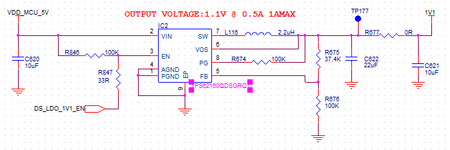newbie_hs
Full Member level 1
I am using TPS62160QDSGRQ1 in my design. I need to enable and disable it using a microcontroller GPIO and it voltage is 1.8V.
Below is my circuit.

My design calculations are are given below.

May I know your comments
Below is my circuit.
My design calculations are are given below.
May I know your comments
